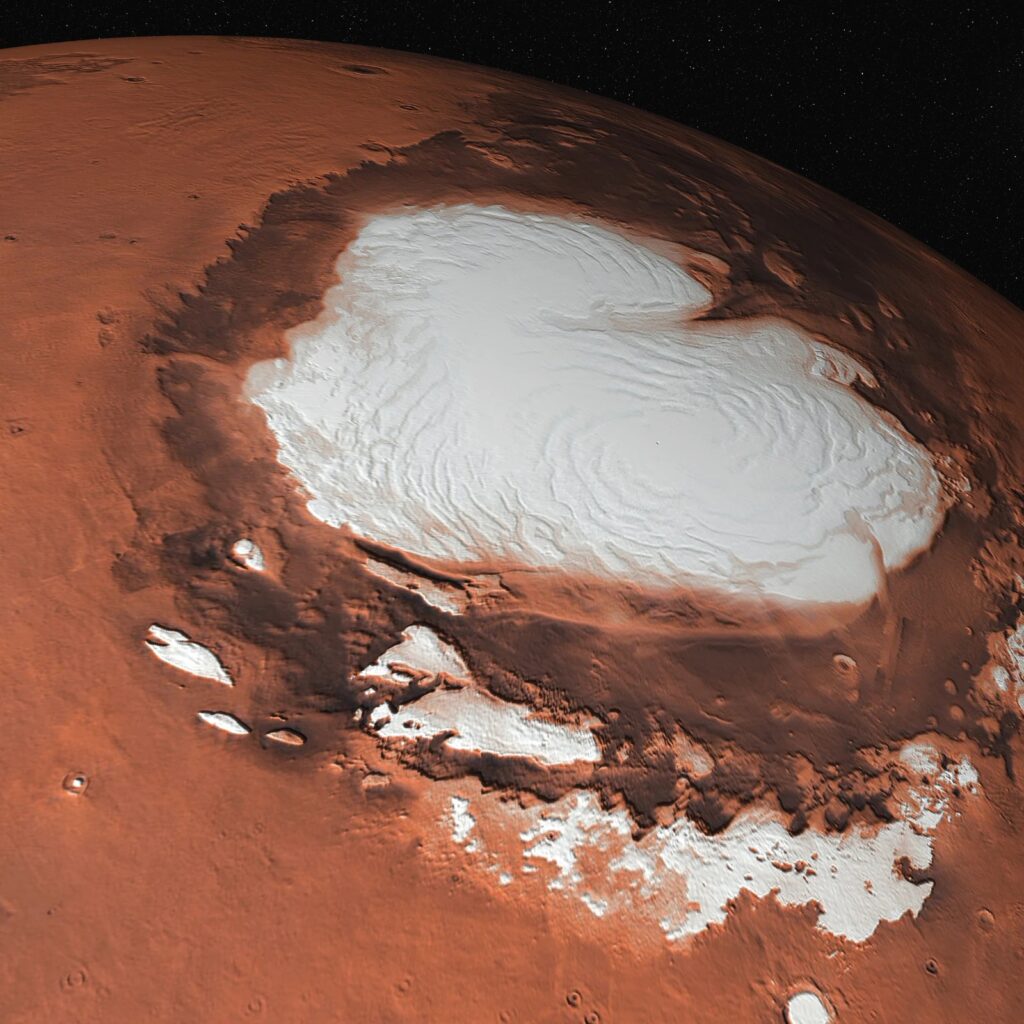Giant deposits of dry ice discovered at the South Pole of Mars were formed as a result of the movement of carbon dioxide glaciers. This is stated in an article published in a recent issue of the Journal for Geophysical Research—Planets.

The famous Martian polar caps consist of two main parts. At the bottom, there are layers consisting of a mixture of water ice and dust. They go hundreds of meters deep into the planet. Above them is a visible layer of dry ice. It is formed as a result of seasonal freezing of carbon dioxide from the Martian atmosphere.
The average thickness of the dry ice layer is on average small and does not exceed a meter. However, in 2011, researchers were able to detect powerful deposits of carbon dioxide at the South Pole of Mars. The largest glacier is about 200 km long and about 40 km across. According to some estimates, in the case of their sublimation, the atmospheric pressure on the planet would almost double.
According to scientists from the Isaac Smith Planetary Science Institute, such significant deposits of dry ice could have formed only if the carbon dioxide glaciers of Mars were moving, similar to the movement of the glaciers of the Earth. Otherwise, their thickness would not exceed 45 meters.
As proof of their correctness, the researchers cite the results of computer modeling. It showed that in Martian conditions, dry ice is able to “drain” down the slopes with almost a hundred times more speed than water ice. That is why it gradually accumulates in various basins and depressions at the South Pole, while the rest of the Martian ice caps remain motionless. According to the calculations of scientists, the formation of existing dry ice deposits began about 600 thousand years ago, when there was a change of climatic cycles on Mars.
Recall that we recently wrote about the Martian Korolev crater. Now it is almost completely filled with ice.
According to https://phys.org
Follow us on Twitter to get the most interesting space news in time
https://twitter.com/ust_magazine
